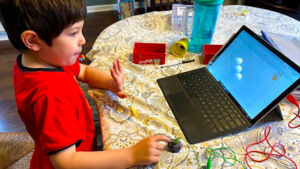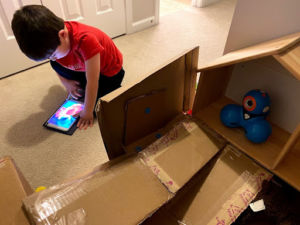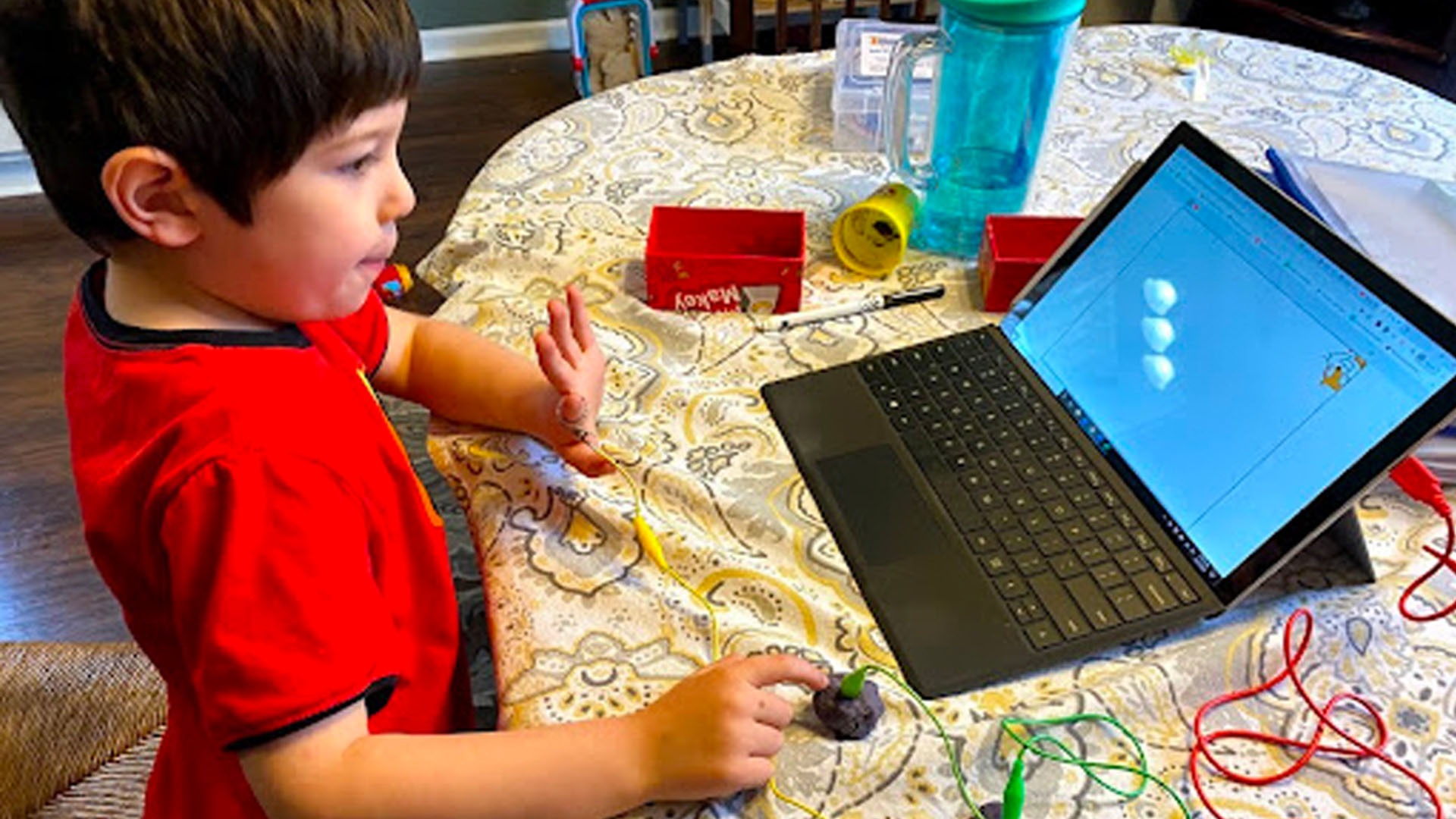Makerspaces have been making an appearance throughout the country as new places to conduct hands-on learning. From small in-classroom maker corners to new buildings dedicated to innovation, maker education has continued to sweep the nation. Why is maker education so impactful for students? How will they lead to better outcomes for students, teachers, and communities? Here are eight ways maker education benefits students, educators, and communities alike.
1. Maker education requires students to develop employability skills

These essential skills, also known as “soft skills” or “21st Century Skills” are the cornerstone of how we function as humans. Problem-solving, communication, time management, and perseverance (just to name a few) are key skills students develop alongside academic skills in a makerspace. When students are designing a nametag in Tinkercad or making a guitar using cardboard and a micro:bit, they have to think critically about how to solve a variety of problems. Regardless of the product, projects without single solutions enable students to test their ideas and learn how to work with others. In an earlier blog post, we discussed how makerspaces develop employability skills in more detail. There are curriculums available for purchase which align to the Indiana Academic and Employability Skills Standards including one from 1st Maker Space.
2. Hand-on learning leads to better academic outcomes
Academic research has revealed that makerspaces deepen content knowledge in addition to employability skills (Bower, et. Al., 2018). A study by Wilson, Taylor, Kowalski, and Clarkson in 2009 found students who were taught using inquiry-based methods performed significantly better than students who only received traditional instruction. Additionally, students who were taught with commonplace teaching methods had gaps in their knowledge by race, and those who were taught using inquiry-based methods did not. Makerspaces are not just for “bonus” or “extra” learning, they belong in the regular school day to deepen content knowledge and develop employability skills. See our previous blog post, the Brain Science of Making, to discover how the brain and hands are connected.
Makerspaces are not just for “bonus” or “extra” learning, they belong in the regular school day to deepen content knowledge and develop employability skills.
3. Maker Education is an early investment in workforce development
Most efforts in workforce development are geared towards building adults’ skills, but shouldn’t some of those efforts be directed toward our youth? Students should be exposed to and prepared for a world of work which will evolve over time, and maker education develops that mindset early on.
4. The future of manufacturing will be led by makers
3D printing has completely redefined the additive manufacturing process over the past few decades, and schools now have access to the same technology that manufacturing companies use. Prototyping a part or product has never been easier. Like many maker education projects, 3D printing engages students in manufacturing while connecting to academic content.
5. The competitiveness of the USA depends on makers
In January of 2021, the US Senate passed the Innovation and Competition Act, led by Senator Todd Young. This monumental legislation will create spaces and opportunities across the country to advance STEM fields. The legislation was introduced to strengthen the position of the USA in the world as a global tech leader. Our future as a country depends on students being prepared to thrive with technology. Maker education gives students the opportunity to not just consume technology but develop it.
6. Makerspaces enable community partnerships
Makerspaces are focused on people, not tools, and enable a variety of different institutions to get involved. For example, in the MSD of Lawrence Township, Indian Creek Elementary uses the makerspace to attract a variety of local businesses and non-profits to partner with the school. These organizations bring different resources to the school, including donations, guest speakers, volunteers, and supplies. These mutually beneficial relationships are made possible by their makerspace.
7. Cross-curricular connections are abundant in makerspaces
It is almost impossible to do a project in a makerspace that does not involve at least two content areas. For example, if students were to build an Interactive City using Makey Makeys, they are exploring social studies, computer science, visual art, and ELA.
8. Teaching in a makerspace is more fun for educators
Although makerspaces require some professional development to get started, teaching in a makerspace shifts the learning from being teacher-driven to student-driven. Teachers turn into facilitators and help students discover the joy of learning. Student disruptions and misbehavior are less likely to occur when students are engaged in meaningful projects. At a time where teacher recruitment and retention are at an all-time low, maker education brings joy back to education for students and teachers alike.
9. Maker education aligns with SEL
Students come to school carrying burdens that to many of us are unimaginable. Social-emotional competencies, including collaboration, critical thinking, and mindset can all be developed and deepened through maker education.
10. Students enjoy learning in a makerspace

Mary Rinehart, the President of 1st Maker Spaces’ son, who is often featured in photos on our blog and social media account, loves hands-on learning. When he comes home from school, he often beams about activities and lessons where he had to make something, regardless of what content area he was learning. Student satisfaction and joy is not often considered in curriculum, but it should be a part of the conversation. After all, it is neurologically impossible to learn deeply about something you don’t care about (McQuinn, 2018). Every makerspace is more than a room with tools. It is a place where creativity takes flight and students discover their passion. What will your students have to look forward to this year? If you see the benefits of a makerspace, contact 1st Maker Space for a free consultation at info@1stmakerspace.com.
Resources
Please login or register to claim PGPs.
Alternatively, you may use the PGP Request Form if you prefer to not register an account.




[…] organizations that contain tools and materials people can use to make collaboratively or alone. Maker Education promotes critical thinking, problem solving, collaboration, persistence, and social-emotional competencies! […]